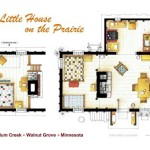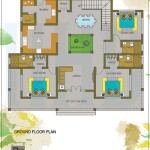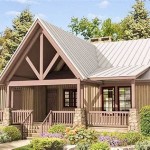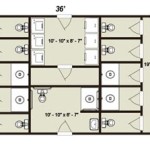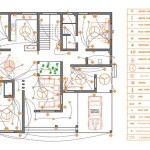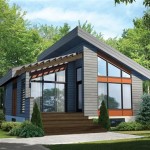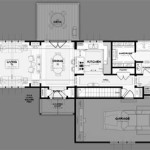Small House Plans With Loft and Basement: Maximizing Space and Functionality
The appeal of small house living is steadily increasing, driven by factors like affordability, reduced environmental impact, and a desire for simpler lifestyles. However, limited square footage often presents design challenges. Incorporating a loft and a basement into a small house plan offers effective solutions for expanding living space and maximizing functionality without significantly increasing the building footprint.
This article explores the benefits and considerations associated with small house plans that feature both a loft and a basement, highlighting key design elements, functional possibilities, and potential challenges. It provides insight into how to effectively utilize these spaces to create a comfortable and efficient living environment.
Understanding the Benefits of a Loft and Basement Combination
Combining a loft and basement in a small house design creates a multi-layered living experience. The loft, typically situated under a vaulted ceiling, offers an open, airy space ideal for bedrooms, offices, or recreational areas. The basement, conversely, provides a more enclosed and private environment suitable for storage, laundry, workshops, or even additional living quarters. This combination strategically utilizes both the vertical and subterranean dimensions of the property, effectively doubling or tripling the usable space of the house without expanding the building's ground-level footprint.
A well-designed basement can significantly increase a home's resale value. Finished basements are often factored into the overall square footage appraisal, making them a worthwhile investment. Furthermore, a basement provides excellent insulation, contributing to energy efficiency and reducing heating and cooling costs. The loft, with its elevated position, often captures more natural light and offers better ventilation, enhancing the overall living experience.
The separation offered by the loft and basement allows for distinct functional zones within the small house. For example, the main floor could serve as the primary living area, the loft as a bedroom suite, and the basement as a home office or recreational space. This organization promotes a sense of spaciousness and privacy, mitigating the feeling of confinement that can sometimes occur in small homes.
Essential Design Considerations for Lofts and Basements in Small Houses
Designing a small house with both a loft and a basement requires careful planning and attention to detail. Several key factors must be considered to ensure the functionality, safety, and aesthetic appeal of these spaces.
Structural Integrity: The foundation and structural support of the house are paramount. The basement construction must adhere to local building codes and employ proper waterproofing techniques to prevent moisture issues. The loft structure must be designed to safely support the intended load, including furniture and occupants. A structural engineer should be consulted to ensure the structural integrity of both the basement and loft, particularly in areas prone to seismic activity or extreme weather conditions.
Accessibility: Access to both the loft and the basement must be carefully considered. Lofts are typically accessed via stairs or ladders. Staircases offer greater convenience and safety, particularly for older adults or individuals with mobility limitations. However, they require more floor space. Ladders are a more space-efficient option, but may not be suitable for everyone. Basement access can be achieved through an interior staircase, an exterior entrance, or a combination of both. An exterior entrance can be particularly useful for basements intended for use as separate living quarters or workshops.
Lighting and Ventilation: Adequate lighting and ventilation are crucial for both the loft and the basement. Lofts often benefit from natural light through strategically placed windows or skylights. However, proper insulation and shading devices are necessary to prevent overheating during the summer months. Basements often require artificial lighting to compensate for the lack of natural light. Dehumidifiers and ventilation systems are essential for maintaining air quality and preventing mold growth in basements. Ensuring compliance with local building codes for egress windows is necessary for basement bedrooms.
Building Codes and Regulations: Compliance with local building codes and regulations is essential throughout the design and construction process. These codes often dictate minimum ceiling heights, egress requirements, fire safety measures, and other aspects of building safety. Failing to comply with these regulations can result in delays, fines, and even the inability to occupy the house. A qualified architect or building contractor can provide guidance on navigating local building codes and ensuring compliance.
Maximizing Functionality in Small House Lofts and Basements
The functionality of a loft and basement in a small house is largely determined by the specific needs and preferences of the occupants. By carefully considering the intended use of these spaces, they can be designed to maximize their utility and enhance the overall living experience.
Loft Design Options: Lofts can be configured in various ways to suit different purposes. A loft bedroom can be designed as a cozy and private retreat, complete with a low-profile bed, built-in storage, and soft lighting. A loft office can provide a dedicated workspace away from the distractions of the main living area, featuring a desk, shelving, and comfortable seating. A loft recreational area can serve as a home theater, game room, or hobby space, providing a flexible and adaptable area for leisure activities. The key to successful loft design is to consider the specific needs of the occupant and to maximize the use of vertical space through built-in storage and multi-functional furniture.
Basement Design Options: Basements offer even greater flexibility in terms of design and functionality. A finished basement can serve as an additional living room, providing a comfortable space for relaxation and entertainment. A basement bedroom suite can offer privacy and seclusion for guests or family members. A basement home theater can create an immersive cinematic experience. A basement workshop can provide a dedicated space for hobbies and DIY projects. A basement laundry room can free up valuable space on the main floor. The possibilities are virtually endless, limited only by budget and imagination.
Storage Solutions: Both lofts and basements offer excellent opportunities for storage. In lofts, built-in shelves, drawers, and closets can maximize storage space without sacrificing floor space. Under-eave storage can be particularly effective in lofts with sloped ceilings. In basements, shelving units, cabinets, and plastic storage bins can help to organize and protect belongings. Proper labeling and categorization of stored items are essential for efficient retrieval. Optimizing storage in both the loft and basement can help to keep the main living area clutter-free and create a more spacious and organized living environment.
Furthermore, consider the noise levels within each space. Basements, being partially subterranean, are naturally quieter, making them ideal for activities like home theaters or music rooms. Lofts, on the other hand, might benefit from soundproofing measures if used as a bedroom or office, especially if located above a busy living area.
Ultimately, the success of incorporating a loft and basement into a small house plan hinges on careful planning, thoughtful design, and a clear understanding of the homeowner's needs and priorities. By addressing the key considerations outlined above, it is possible to create a small house that is both functional and comfortable, maximizing the use of available space and enhancing the overall quality of life.

Small Cottage Plan With Walkout Basement Floor

Small Cabin House Plans With Loft And Porch For Fall Houseplans Blog Com

Craftsman Floor Plan Main 303 473 Basement House Plans Narrow Lot

Open Floor Plan With Wrap Around Porch Banner Elk Ii

Small Cabin House Plans With Loft And Porch For Fall Houseplans Blog Com

10 Small House Plans With Open Floor Blog Homeplans Com

Small Cottage Plan With Walkout Basement Floor House Plans

Small Cottage Plan With Walkout Basement Floor

Walkout Basement House Plan For Sloping Lot

Stylish And Smart 2 Story House Plans With Basements Houseplans Blog Com

